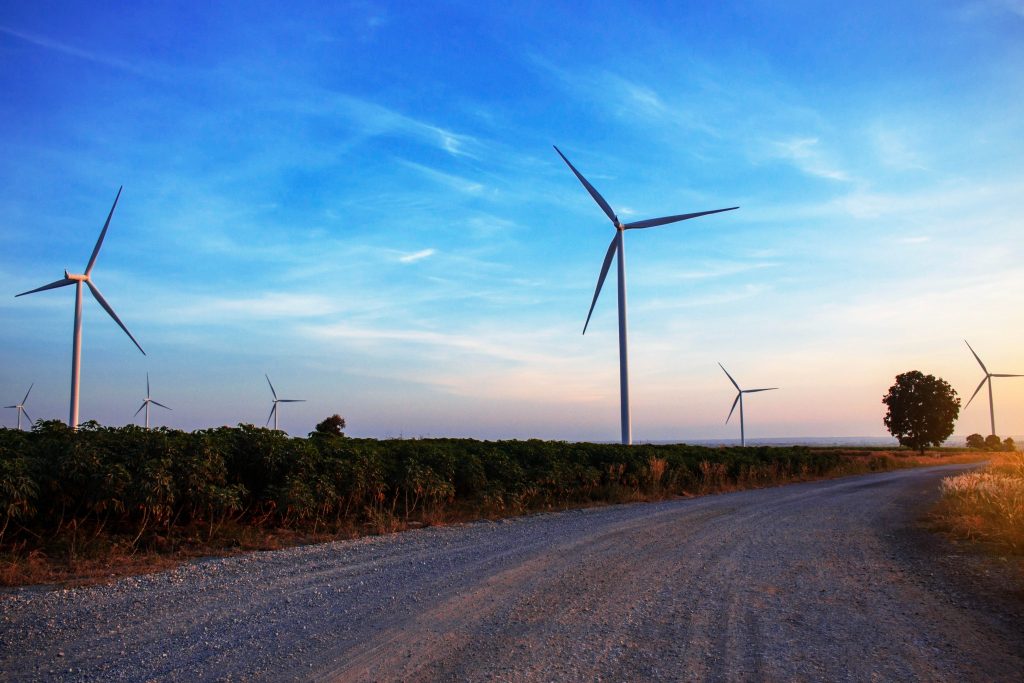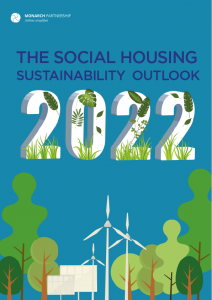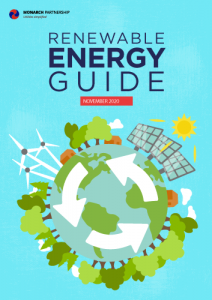A new decade of energy
Numerous reports have outlined 2019 as a groundbreaking year for the UK renewable energy industry, with wind, solar, hydro and biomass growing by 9% and outperforming fossil fuels on 137 days of the year. The government has plans to roll out 40GW of offshore wind by 2030. The newly-elected PM Boris Johnson has made a splattering of promises for a greener future, but will he uphold them?
It’s without much doubt that sustainability will be the biggest focus for the energy industry over the next decade and beyond, so how will we continue to slash carbon in the sector?
More immediately, we take a look at what we can expect to see in 2020 in the energy industry and other cost reduction fields, based on expert opinion, analysis of current schemes and insight from our team of consultants in their respective specialist fields.
Sustainability in the energy industry
As previously mentioned, green energy is now not only competing with but outperforming fossil fuels. Coal is slowly fading into an unfashionable ether, its market predicted to grow at a slower rate than global population growth in 2020. Despite this shift, what can’t be neglected is the notion that whilst the renewable energy industry is ramping up, so too is overall power demand. Carbon Consultant for Monarch Partnership Stephanie Strange explains:
“With global energy use set to double towards the net-zero target of 2050, and New Year political instabilities between the US and Iran, it is likely that renewable investment will be the key player to secure energy prices for consumers in the UK.”
But can renewables continue to overcome these and other hurdles?
“Another potential pitfall is distribution costs being at an all-time high. However, with increased investment into green-bonds, I would say there is fresh hope these factors will balance each other out to sustain current charges to consumers.
“These factors along with a continuation of our strong wind output should see renewable energy rise further, which could lead to sustaining the clean energy surge that we are seeing in the energy market.”

Energy industry infrastructure
Battery storage and Demand Side Response:
We may be making serious strides in cleaning up our energy sources, switching from carbon-soaked fossil fuels to renewable power, but what we may see in 2020 is some infrastructural enhancements that will enable better interaction between renewable power and the grid.
The key to maximising the efficiency of the renewable energy industry is battery storage. This will help to amass a reserve of unused energy during peak supply for usage during times of peak demand. This method of grid balancing and load shifting is integral if we are to push green energy even further as we strive to meet the demands of the Paris Agreement.
With the right amount of financial support, battery storage and Demand Side Response (DSR) strategies could become a key factor in grid management in 2020.
The push for battery storage and DSR is evident in the number of projects being pushed through towards the end of last year. Those reported on by The Energyst alone make up a substantial list:
Eaton and Green Motion battery storage
Western Power Distribution demand-side response
Warrington Council’s massive solar-storage project
Balancing mechanism now open to smaller players
Fotowatio Renewable Ventures battery storage scheme
Energy as a Service
Something else we might see as the year develops is the beginnings of a move towards a more all-encompassing model for energy service. ESCOs, EPCs and EaaS, aside from being a series of confusing acronyms largely made up of the same letters in different orders, are all related to the ongoing energy performance management of a company. Energy Service Companies (ESCOs) have typically delivered Energy Performance Contracts (EPCs) in the past, but there are a handful of reasons why these might not be the answer for much longer. A couple of the main road-blocks are:
- They are simply a contract and not an ongoing financing mechanism or reactive service.
- They don’t really perform outside the public sector
It has been suggested that Energy as a Service (EaaS) will be the model to make strides in 2020, a welcome move away from single technologies in favour of an ongoing service that doesn’t sell ‘energy’ but a complete bundle of more specific necessities such as heat, cooling, comfort and light. The costs are a flat fee, less than their existing energy cost which covers on-going maintenance.
Whilst ESCOs deliver EPCs that are fairly one-dimensional, future EaaS models will incorporate Combined Heat and Power (CHP), solar PV, DSR and micro-grids to create a more efficient and financially beneficial system. They also are being designed to suit not only the public sector but SMEs, residential, industrial and commercial markets also.
Commercial
On the topic of commercial markets, here at Monarch Partnership, we work with commercial companies to help reduce their energy spend and streamline efficiency. Commercial businesses are arguably held the most accountable for energy efficiency, with the rise of mandatory reporting, the benefits of presenting green credentials and the battle to remain profitable in a cut-throat market.

Pressure for transparency is one thing, but Monarch’s Commercial Manager Rauf Bashir believes the plight of suppliers to be a cause for introspection.
“Nine suppliers collapsed in 2018 and eight others have followed in 2019 so far. 2020 is likely to see around five more suppliers go bust or exit the market.
“Later in the year, the Big Six will become the Big Five as Eon phases out the Npower brand, and Ovo may finally take over SSE with their proposed deal.
“Commercial companies will have to start looking at their usage and energy efficiencies as this will be the best route to managing the energy costs within their business. If the smart meter revolution goes ahead successfully, this will give the companies the information required to target and manage their energy usage.”
Telecoms
Though not directly linked to the energy industry, commercial companies – along with SMEs have to consider the streamlining of every corner of their operations. As an add-on to energy management, consultancy Smith Bellerby also cover telecoms in their cost-saving services. Operations manager for Smith Bellerby Simon Quantrell-Evans is aware of the need to bring telecoms management in line with an energy plan in order to maximise savings.
“At Smith Bellerby we are of the belief that telecoms are key to all business, especially as we enter a new decade where the need to communicate is essential.
“Given the major telecoms industry change with the cessation of ISDN by 2025, we believe that up to 2million UK businesses now have to decide whether to upgrade their existing PBX (Phone By Exchange) system or look to invest in a new VoIP PBX system, offering significant benefits of Unified Communications/Flexibility to their workforce.”
So, it’s not just about savings. Considering your network choices can lead to greater functionality and therefore productivity at your workplace.
“UK businesses can also look to benefit from the UK’s faster 5G mobile network which continues to be rolled out across all major towns and cities, whilst additionally investing in more affordable dedicated Leased Line Full Fibre Broadband Networks, which offer speeds of up to 10Gb available on a corporate basis.”

There’s a chance 2020 may see telecoms as a more prominent feature in business operation plans as a way of boosting performance and saving money. However, consultancies that cover telecoms, such as Smith Bellerby, know the importance of keeping it tailored to the needs of the individual business:
“In addition, the need to review and analyse telecoms costs is paramount and as fundamental as the work the group undertakes with energy costs. Last year alone, we helped identify significant cost savings via both contract procurement and installation of new VoIP systems and by highlighting significant issues to customers, such as supplier contract discrepancies and better excessive use awareness via improved employee education.”
Waste
Another area we cover is waste management, powered by utility consultancy ESS. Tying in with the growth in the green energy industry, we expect to see movements towards improved recycling infrastructure, although perhaps not at the same rate. One problem with the recycling industry is that operationally, the physical recycling of materials is often left in the hands of the people who, through no fault of their own, have insufficient information on recycling, or simply lack the resources. This is why we have started to see sporadic installations of smart waste technology such as ‘reverse vending machines’ and an improvement in the use of data in the industry. At this stage, they are largely prototypes or one-off schemes and we may be a way off large-scale roll-outs of these.
In terms of what we can do now in 2020, we can at least monitor more closely the end-to-end process of what happens to our waste.
Calum Mangan, General manager of ESS Utility works with organisations to help optimise their waste management plans. He stresses the importance of giving consideration to this often-neglected area:
“There are more variables than people think when considering what happens to their waste and these variables can unlock savings and offer an escape from a bad or ill-fitting service. If you don’t want to do it yourself, we can take a look at providers, contract prices, pick-up timetables, site termination windows and types of waste supplies per site.
“An example of something to consider is whether one national provider or a selection of regional providers will be able to deliver a better overall service. Or whether or not it would prove cost-effective to replace one large container with two smaller containers, leading to fewer pickups during the year and therefore a reduction in the cost per weight per lift. These are all largely ignored areas.”
Energy market
If geopolitical relations were already weak between the US and the Middle East, the events that have already soured the new decade in its embryonic form have completely obliterated them. The US assassination of top Iranian general Qassem Suleimani and subsequent missile attack on US military bases in Iraq prompted a kneejerk rise in oil prices, but as events play out we will find out more regarding how this will affect the energy market in the long term. This along with the uncertainty of Brexit that will continue even after the hypothetical ‘getting Brexit done’ – due to the implementation period and ongoing trade negotiations, should continue to ruffle the feathers of the market. However, in the extremely optimistic circumstances of a war-reticent Trump and a sweep of smooth UK-EU trade deals we may see the market settle.
If you wish to keep up to date with what’s happening in the energy market, you can subscribe below to receive our weekly Market Intelligence Report.
So these are our energy predictions for the year ahead. Though the market, legislation, government schemes and funding are out of our hands, we will continue to monitor market conditions and our clients’ energy consumption and bills to ensure none of them are overspending in 2020 where it can be prevented.















